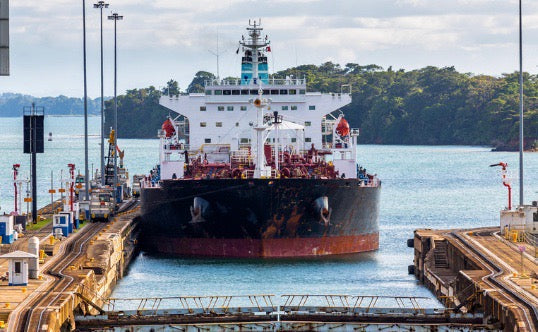
Panama Canal: Re-engagement by USA Just Makes Sense
Share
Commitments Made
The United States played a crucial role in the creation, operation, and security of the Panama Canal, a vital artery of global trade. Completed in 1914, the canal was constructed under American leadership, showcasing the country's engineering prowess and strategic vision. For decades, the U.S. maintained control of the canal, ensuring its smooth operation and safeguarding its critical role in international commerce.
The Torrijos-Carter Treaties of 1977 marked a turning point in the canal's management, transitioning control to Panama by the end of 1999. In exchange, Panama committed to maintaining the canal as an international waterway and ensuring its neutrality. These agreements attempted to memorialize the concept of mutual respect and the shared goal of preserving the canal's global significance.
Concerns Develop
The Panama Canal Authority (ACP), established to manage the canal after its transition, faced scrutiny regarding transparency and efficiency. Allegations of corruption surfaced over the years, raising questions about the integrity of its operations. Critics have pointed to concerns over decision-making processes and the allocation of funds for canal maintenance and expansion.
Between 2000 and 2024, the ACP forged significant relationships with international entities, including companies from China. These partnerships aimed to enhance the canal’s capacity and sustain its role in global trade. However, some observers voiced apprehension over the strategic implications of these alliances.

The canal expansion project, completed in 2016, introduced a third lane to accommodate larger vessels, dramatically increasing capacity. This ambitious project involved contracts with Chinese firms, whose involvement has persisted post-expansion. The continued role of these companies has raised questions about their influence over this vital waterway.
The canal’s toll structure has also come under scrutiny, with some evidence suggesting disproportionate costs for vessels from specific nations. U.S. vessels, in particular, appear to bear higher toll rates, prompting concerns over fairness and the potential impact on American commerce.
Current Situation
Today, the Panama Canal remains a crucial hub for international trade, with significant traffic attributed to U.S. vessels. The canal facilitates the transit of billions of dollars’ worth of goods annually, underscoring its importance to American commerce. As the U.S. remains one of the canal’s largest users, its efficiency and accessibility are vital to sustaining economic growth.

The canal’s strategic value extends beyond trade, serving as a key enabler of U.S. national security. Its location allows rapid deployment of naval assets between the Atlantic and Pacific Oceans, ensuring the operational readiness of the Navy’s Atlantic and Pacific Fleets. Maintaining unrestricted access to the canal is essential for U.S. military strategy and global security interests.
Summary
The Torrijos-Carter Treaties promised a neutral and efficiently managed Panama Canal, yet concerns have grown regarding Panama’s fulfillment of its commitments. Issues of corruption, foreign influence, and toll disparities raise questions about the canal's operation and its alignment with U.S. interests.
At WaveRocket, we celebrate American heritage through our high-quality, thought-provoking tee shirts and engaging articles. Explore our innovative designs that inspire pride and a winning culture, while staying informed through our posts that delve into key topics of American history, culture, and politics.
Discover more at WaveRocket Posts.
--- by Florence Csonka
